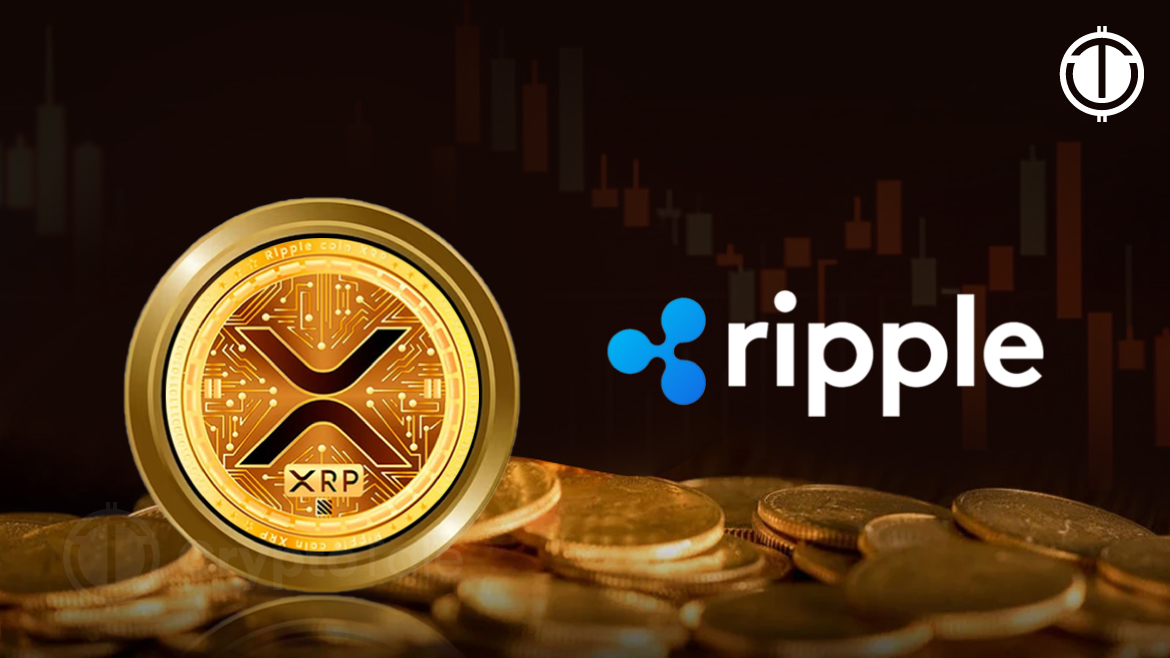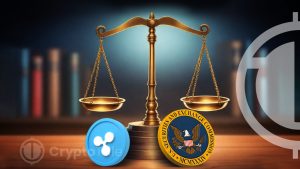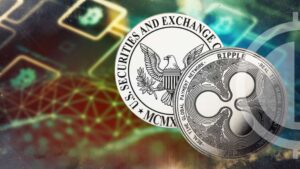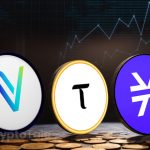Origin of Ripple
Ripple, a significant name in the cryptocurrency world, emerged from the efforts of David Schwartz, Jed McCaleb, and Arthur Britto in 2011. Their goal was to create a digital currency system that didn’t rely on the energy-intensive mining process inherent in Bitcoin. In June 2012, this led to the birth of the XRP Ledger. Chris Larsen, an angel investor, soon joined the trio, and their initial venture, NewCoin, underwent a couple of name changes, finally becoming Ripple.
Jed McCaleb, a key figure in Ripple’s founding, parted ways in 2014, embarking on a new venture, Stellar XLM. His departure was marked by a significant endowment of 9 billion XRP tokens, which he later sold off. Ripple’s architecture initially included several components like the Ripple Consensus Ledger and the Ripple Transaction Protocol, all revolving around the XRP cryptocurrency. These elements have now been integrated into RippleNet, a comprehensive suite of products and services for global financial transactions.
Ripple received a massive boost with 80 billion XRP tokens from its developers to support the cryptocurrency’s ecosystem. The company strategically utilized these tokens to enhance liquidity and foster a robust market for XRP. 2020 saw the establishment of the XRPL Foundation, an independent entity focused on promoting the decentralized XRP ledger. With a funding injection of $6.5 million, the foundation set up an XRP Community Fund and took steps to advance the ledger’s infrastructure.
Contributions from Coil, Ripple, and Gatehub played a pivotal role in extending the foundation’s reach, supporting a burgeoning community of developers and users interested in building on the XRP Ledger. The XRPL Foundation’s efforts have been crucial in shaping Ripple’s ecosystem. By maintaining a list of trusted validators, it ensures the ledger’s efficiency and dynamism. This approach embodies the decentralized, open-source ethos of blockchain technology, fostering a collaborative and secure environment for the XRP Ledger’s continued development and success.
What is XRP?
XRP, the digital token of Ripple, facilitates fast and low-cost international fund transfers. It primarily acts as a bridge currency in the financial sector, allowing for more efficient exchanges between various crypto and fiat currencies. While XRP offers this bridging capability, it also introduces certain risks, particularly due to its dependence on Ripple’s network for liquidity and the inherent volatility of cryptocurrencies.
One of the key attractions of XRP is its minimal transaction fees, with the network charging as little as 0.00002 XRP per transaction. This efficiency is coupled with impressive scalability, handling up to 1,500 transactions every second. Additionally, XRP stands out for its eco-friendly characteristics, being both carbon-neutral and energy-efficient.
Unlike many cryptocurrencies, XRP was premined. This means its tokens were generated before the public launch, a decision taken to reward Ripple’s founders, developers, and early investors. This approach has been a fundamental part of Ripple’s strategy since its inception.
XRP’s role in the Ripple ecosystem
The XRP token and Ripple’s network are often conflated but are distinct elements within the Ripple ecosystem. Ripple functions as a payment settlement network, primarily for banks, facilitating cross-border transactions and currency exchanges, including fiat and digital currencies. While Ripple’s network can operate without XRP, the token plays a crucial role in providing liquidity, especially in transactions involving different currencies.
XRP acts as a bridge in RippleNet’s on-demand liquidity service, eliminating the need for pre-funding accounts in cross-border payments. This functionality has enabled Ripple to form alliances with major financial institutions such as Santander, Bank of America, and American Express.
However, XRP’s nature and its integration into Ripple’s operations have led to legal challenges. In December 2020, the US Securities and Exchange Commission (SEC) filed a lawsuit against Ripple. The SEC’s claim centers on allegations that Ripple conducted unauthorized sales of XRP, treating it as a security without the necessary registration.
What is the use of XRP?
XRP, developed by Ripple, is designed as a faster and more efficient alternative to traditional SWIFT systems for international and cross-border payments. It excels in transactions involving less commonly traded currencies, acting as an affordable intermediary, replacing the usual U.S. dollar at a lower cost.
XRP’s utility shines in the Ripple network, offering a significant speed advantage and reduced fees compared to standard wire transfers, which are often slow and costly. The XRP token is integral to the XRPL Ledger, a robust, scalable blockchain that ensures secure, immutable transaction records accessible only to private key holders.
Managed by a global developer community, XRP’s low-cost and rapid transfer capabilities support a wide range of applications. Its decentralized exchange (DEX), the XRPL DEX, has been operational since 2012, allowing users to trade XRP and other cryptocurrencies with minimal fees. This DEX supports a multitude of currency pairs, with trades executed as “offers” or limit orders.
In April 2022, Allbridge, a cross-chain bridging solution, incorporated XRPL support. This integration expanded Ripple’s reach into decentralized finance (DeFi), connecting it with various blockchain platforms, including Ethereum, Solana, BNB Chain, and others, enhancing interoperability and opening new avenues in DeFi.
How does XRP operate?
Ripple’s XRP operates on a blockchain system, utilizing the XRP Ledger (XRPL) to keep a tamper-proof record of transactions. This ledger tracks details like account balances and fund transfers, using cryptographic key pairs for security. Only those holding private keys can authorize transactions.
The standout feature of XRP is its rapid transaction settlement, often completed in seconds, which facilitates immediate currency exchanges and payments. The confirmation of transactions is handled by a network of over 150 validators. These validators, some earning a spot in Ripple’s Unique Node List (UNL) of 35 validators, work in consensus to confirm transactions. Ripple itself operates only six of these nodes.
Transactions are verified according to the Ripple Protocol Consensus Algorithm (RPCA). The network finalizes transactions usually every 3-5 seconds. For a transaction to be confirmed, at least 80% of the nodes must agree on its validity. This system ensures that even if some validators are compromised, they can’t exceed 20% of the total, maintaining the network’s integrity and functionality.
Where and how to acquire XRP Cryptocurrency
Acquiring XRP cryptocurrency requires navigating through certain restrictions, especially in the U.S. where it’s not listed on local exchanges due to SEC investigations. Globally, however, XRP is accessible on several centralized exchanges like Binance, Bitfinex, Huobi, Kraken, KuCoin, and OKX.
To purchase XRP, follow these steps:
1. Register for an account on a cryptocurrency exchange offering XRP.
2. Deposit fiat currency or another cryptocurrency that you’ll use to buy XRP.
3. Transfer these funds into your trading account on the exchange.
4. Place a market or limit order for XRP.
5. Confirm the purchase by clicking “buy” and entering the desired amount.
6. Once the transaction is complete, transfer your XRP to the exchange’s wallet or an external wallet for safekeeping.
Additionally, XRP is available on decentralized exchanges such as SushiSwap and PancakeSwap. Brokers like eToro also provide an avenue to buy XRP, even offering options like PayPal for transactions. Here, you select XRP from the crypto section, execute a non-leveraged buy order, and then move the acquired XRP to your chosen wallet.
How to mine XRP
XRP stands apart from traditional cryptocurrencies due to its unique governance protocol, which eliminates the need for proof-of-work (PoW) or proof-of-stake (PoS) mining. Instead, it employs the Ripple Protocol Consensus Algorithm (RPCA) to validate transactions, unlike Bitcoin (BTC) and others.
XRP cannot be mined directly. To acquire XRP, individuals typically mine other cryptocurrencies like BTC or Ether and then exchange them for XRP on a cryptocurrency exchange. Be cautious of any claims suggesting ways to mine XRP, as they are likely fraudulent schemes. The Ripple network relies on a network of trusted validators to ensure transaction validity, making mining unnecessary.
XRP vs. BTC
XRP and Bitcoin, two prominent cryptocurrencies, have distinct purposes and governance models. Bitcoin, the pioneer, was created to challenge centralized financial systems, while XRP aims to enhance the efficiency and affordability of the existing financial infrastructure.
The key difference lies in governance. Bitcoin boasts a decentralized network with open participation, where anyone can contribute by validating transactions through mining nodes. In contrast, Ripple relies on a select group of validators for transaction verification, leading some to question its decentralization. Total supply is another divergence. Bitcoin has a fixed supply of 21 million BTC, while XRP has a maximum supply of 100 billion premined coins, with the potential for expansion by its founders.
Bitcoin’s extensive network of nodes makes it highly secure, while XRP relies on a smaller set of validators. Regarding investment, XRP’s future is uncertain due to its ongoing legal issues with the SEC, which have hindered its adoption. Many exchanges have restricted or halted XRP trading.
Ripple has the potential to disrupt international payments, replacing systems like SWIFT with faster and cheaper alternatives. It offers enterprise solutions, like the Liquidity Hub, to bridge the traditional financial world with digital assets. Ripple is also venturing into DeFi, NFTs, and CBDCs, positioning itself as a versatile player in the evolving crypto landscape.
However, Ripple’s success hinges on the outcome of the SEC’s lawsuit, which remains unresolved. Investors should weigh these factors carefully when considering XRP as an investment option.
XRP’s price history has seen significant fluctuations. Its all-time high was $3.84 on January 4, 2018, but it has since decreased by approximately 83.82%. On the other hand, its all-time low was $0.002802 on July 7, 2014, marking an astonishing increase of about 22,083.99%.
As of now, XRP is trading at $0.621673 with a 24-hour trading volume of $1,111,803,793. Over the past 24 hours, it has experienced a 1.37% increase. XRP holds the 5th position on CoinMarketCap, boasting a live market cap of $33,395,231,565. It has a circulating supply of 53,718,306,475 XRP coins, out of a maximum supply of 100,000,000,000 XRP coins.















